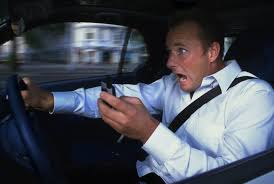New Study Shows Cell Phone Laws Save Motorcyclist’s Lives
New Study Shows Cell Phone Laws Save Motorcyclist’s Lives
A recent study in Florida showed states with stricter “cell phone use while driving” laws have seen reduced fatalities among motorcyclists. Gulcin Gumus of Florida Atlantic University and Michael T. French of the University of Miami looked at government stats over an 11-year period, from 2005 through 2015, to determine whether or not such laws were making a difference pertaining to riders. We motorcyclists make up only 0.6% of vehicle miles traveled on American roads, but make up an alarming 14% of U.S. traffic fatalities. Other recent studies have asserted that increased cell phone use laws and their enforcement have not significantly reduced overall road fatalities, yet until Gumus and French’s study, no one had looked underneath the broad, general stats to see any difference they might be making among motorcycle riders. So they dug deeper.
French himself is an avid rider, owning three BMW bikes, so this was personal to him. Clearly, if a driver causes a crash while fiddling with a cell phone, a collision with another motorist may or may not cause injury. If that same distracted driver hits a motorcyclist, they most certainly will cause injury or even death of the rider. The study, which appeared in the journal Social Science & Medicine, examined the National Highway Traffic Safety Administration traffic fatality statistics, and state laws that restrict handheld cell phone use and texting while driving, and found a definite corollary that such laws have, in fact, reduced motorcyclist fatalities.
Gumus & French classified state laws into 4 categories:
Strong: Primary enforcement of bans on both handheld use and texting for all drivers.
Moderate: Primary enforcement of bans, on either handheld use or texting for all drivers.
Weak: Secondary enforcement of a ban that applies to only novice drivers (??).
None: No restrictions on handheld cell use or texting.
In 2005, 45 states had no restrictions and no states had a “strong” law. By 2015 however, only 2 states remained with no restrictions, with 14 states that had applied and were enforcing “strong” laws. Controlling for the variables that also cause motorcycle road fatalities, such as temperature, precipitation, population density, miles traveled, night hazards, etc., the researchers discovered that states with “strong” laws saw a reduction in motorcyclist deaths by 8.8%, and states with even “moderate” laws saw a reduction of 5.5%. More specifically, examining motorcyclist deaths in multi-vehicle crashes, those reductions jumped to 11% and 7.7% respectively. Significant indeed.
To understand the impact in terms of human lives, Gumus and French concluded that if the 36 states that still do not have “strong” laws did, in fact, have them, about 173 fewer riders would have died in 2015.
Those of us who ride know the dangers posed by distracted drivers on the roads. In this age of the “smartphone” that does everything from talk/text to music playing, GPS, gaming, news, social media, etc., more people are driving with one hand on the wheel and the other wrapped around their phone, half their brain engaged in driving, the other half engaged on their device. If stricter laws governing use while driving reduces fatalities among our brothers and sisters on two wheels, I say that’s worth the effort to legislate.
Rob Brooks
Sources: Social Science & Medicine, Revzilla
“… if the 36 states that still do not have “strong” laws did, in fact, have them, about 173 fewer riders would have died in 2015.”

